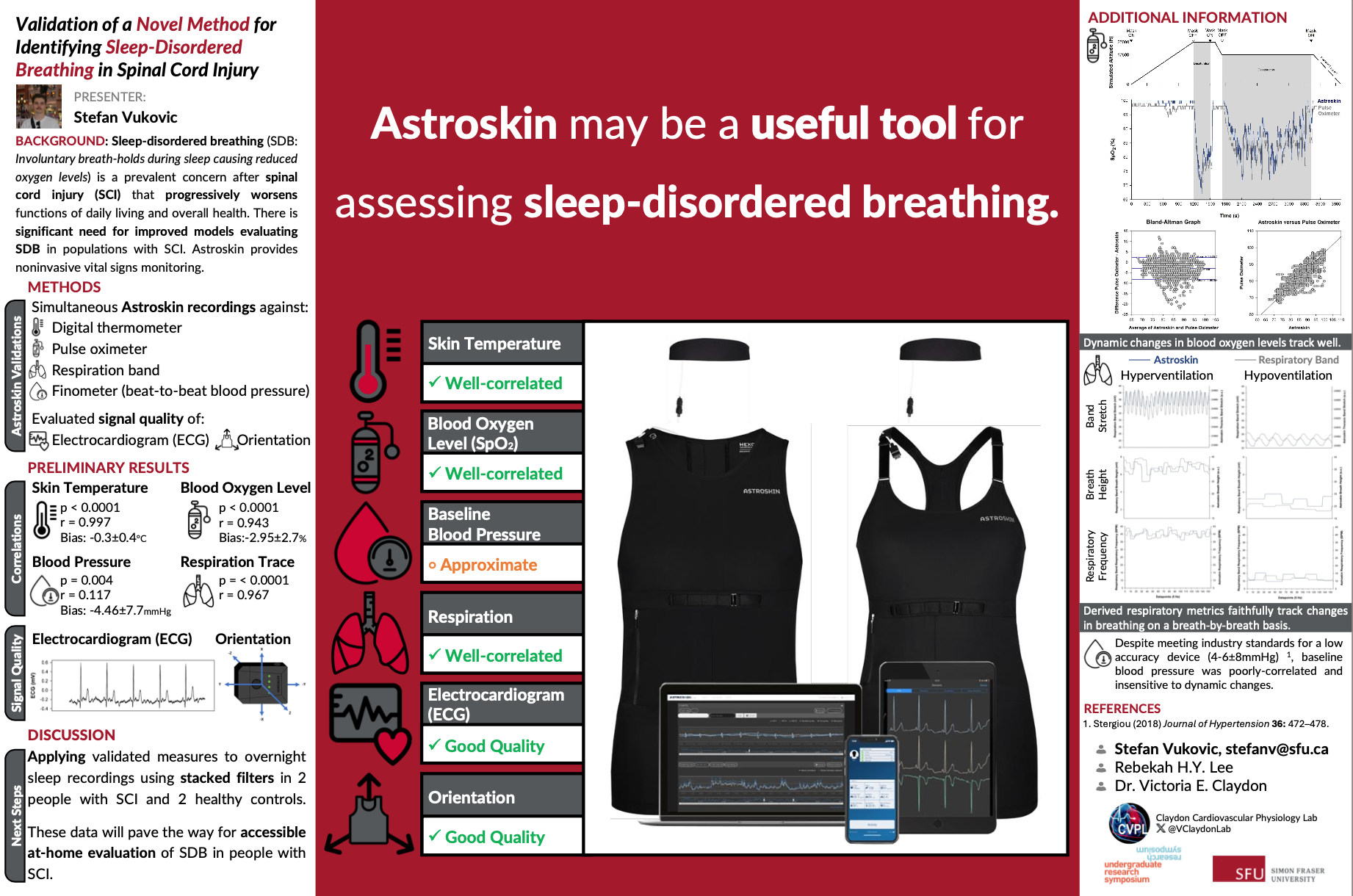Validation of a Novel Method for Identifying Sleep-Disordered Breathing in Spinal Cord Injury
Main Article Content
Abstract
Spinal cord injury (SCI) affects the lives of many Canadians. Far beyond limiting movement and sensation, internal processes (including heart rate, blood pressure, and breathing) can be impacted, resulting in severe long-term health complications. Sleep-disordered breathing (SDB: involuntary breath-holds during sleep causing transient reductions in oxygen levels) is a highly prevalent dysfunction seen in individuals with SCI that can progressively worsen functions of daily living and overall health. There is significant need for improved models evaluating SDB in populations with SCI. Clinical sleep disorder diagnoses are necessary for treatment, but current assessments are often prohibitively difficult to obtain and require specialized in-laboratory testing that can be uncomfortable, impractical, and inaccessible for individuals with SCI. Alternative assessments have emerged but remain limited in design. We are developing a protocol to detect and assess SDB using novel wearable technologies, namely Astroskin and Fitbit, that noninvasively record overnight vital signs and sleep staging. This poster showcases our device validation and at-home sleep testing protocol as examined in two individuals with SCI and two healthy controls. We are validating the monitoring capabilities of the Astroskin form-fitting vest and headband by comparing its metrics against simultaneous recordings using relevant gold-standard criteria. Fitbit devices are the most-used wearables in conducting biomedical research, and the recording validity of their sleep staging has been well-established, enabling alignment of vital signs and sleep stages. Application of validated measures to overnight sleep recordings using stacked filters will enable identification and severity assessment of SDB based on expected physiological outcomes.
Faculty Supervisor: Dr. Victoria Claydon, Department of Biomedical Physiology and Kinesiology, Simon Fraser University
Research Team Member: Rebekah H.Y. Lee, Department of Biomedical Physiology and Kinesiology, Simon Fraser University
Article Details

This work is licensed under a Creative Commons Attribution-NonCommercial-NoDerivatives 4.0 International License.

